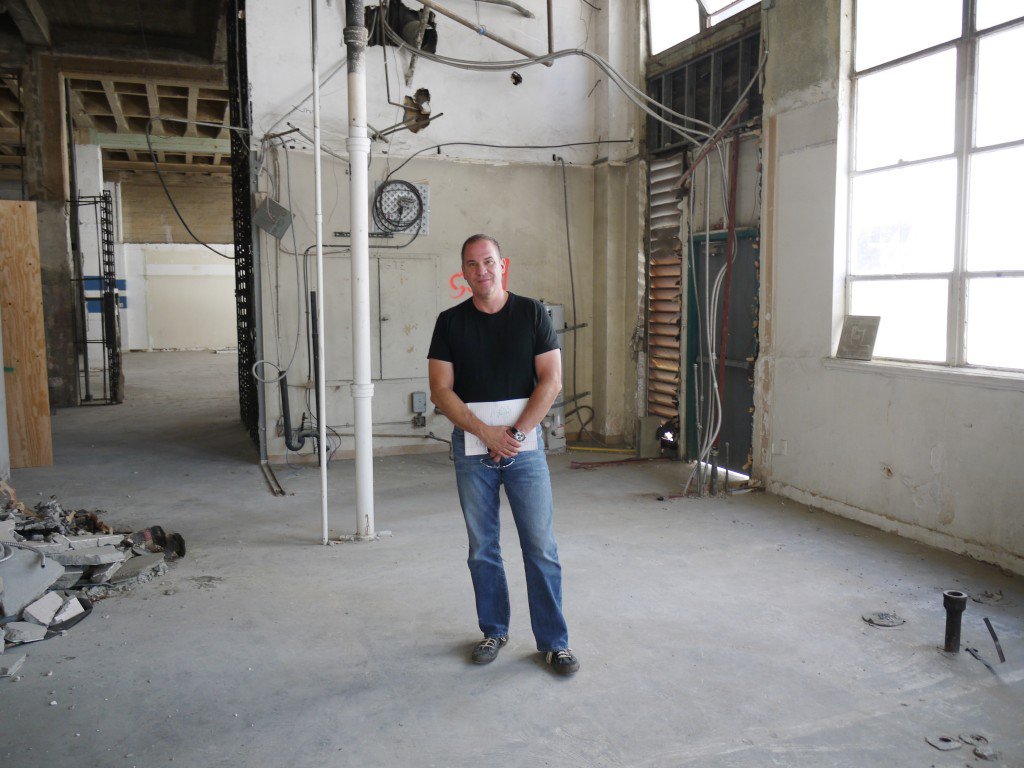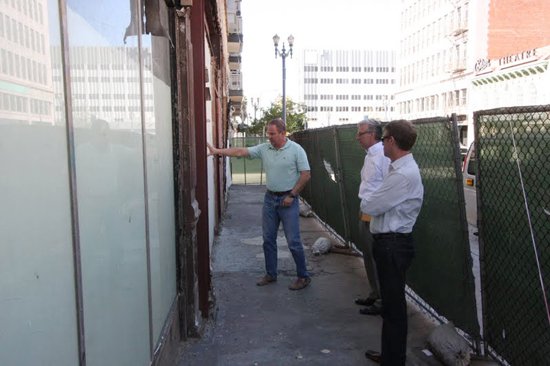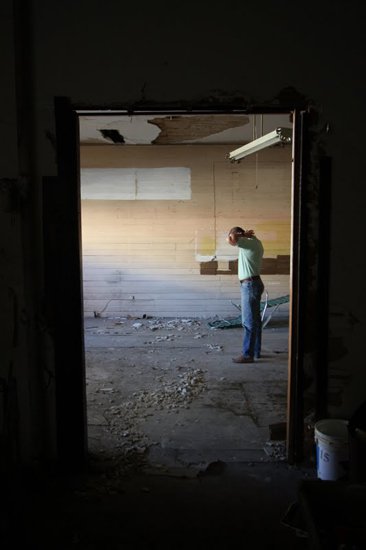Jan Robert van Dijs: Steward of the Psychic Temple
Jan Robert van Dijs is the namesake of JR van Dijs, Inc. Drawing from his experience and expertise in constructing large-scale, high-end projects in New York, Paris, London, Italy, and Asia, he and his crew are committed to changing the way people perceive and experience Long Beach, CA, one old structure–more often two or three–at a time.
van Dijs and his team have restored and updated buildings from beloved historic structures such as the Ebell Club and Art Theatre to more recent landmarks such as the former compound of SST Records (where his offices are now located). I met Jan across the street from there at yet another one of his projects, the Berlin coffeehouse. We talked about his career and his team’s upcoming work on the Psychic Temple.
PT: How did a guy like you, who has worked in many of the world’s great cities, wind up settling down in Long Beach?
JRvD: For a number of years, I was in construction management and worked internationally but lived here. Then about nine years ago, I decided to stop. I really enjoyed it, but the travel was getting to me, my daughter was about to be born, and I knew that things were changing.
PT: Can you share your views on the preservation and restoration of old buildings?
JRvD: Everything is political, social, and economic in this world that we live in. But for me, it’s very personal. This is the city I live in and this is the city I work in, and it just so happens that my personal passions align with my profession.
I like old buildings. I believe in them from a practical standpoint and from a redevelopment standpoint. They give texture to streetscapes and allow for more interesting projects. I think the people who want to tear everything down and build anew are shortsighted and narrow-minded. That might be easier, but it’s not necessarily better. And in the long run, if you’re looking to salvage communities and rebuild your inner city core, restoration is the best way to do it. I believe that passionately.
PT: When did you become aware of the American Hotel?
JRvD: The city bought the building in 2000. At the time, it was operated as a flophouse-type hotel, and I don’t know if they intended to salvage the building.
Shortly after they bought it, they entered negotiations with some hotel groups. The process got far enough that I was asked to go to several planning and redevelopment meetings to serve as a liaison for the historical community to see what was being planned.
PT: Can you describe any of the proposed plans?
JRvD: There was one developer who said, “I can’t save the building. All I’m going to do is save the façade.” The reality was that he wanted to buy the whole lot and was just keeping the façade as a token, but that fell through.
PT: And how did your team become more directly involved with the building’s future?
JRvD: Four and a half years ago, I wrote a letter to the city. I said, “The building is degrading to a point where it will be unsalvageable unless you do something soon. It’s still a significant historical building, but water’s pouring in and it’s a mess.”
Three years ago, we were issued an exclusive negotiating agreement and got pretty far down the road in our partnership with the city, to make and market creative offices upstairs and a restaurant and bar downstairs. We went to the historical department and got a Certificate of Appropriateness. Everything was moving forward until January 2011 when the wheels fell off due to the state budget crisis. We re-proposed different things to the city, but the reality was that every time we came close to reaching some kind of an agreement, the rules changed again. It was just a big mess.
PT: And when did interTrend enter the picture?
JRvD: Julia (Huang from interTrend) discovered Berlin during an art walk. She realized it would be a nice place to have lunch and brought some of her staff the next day. There were like eight of them. From here, she looked across the street at our office and said, “That is what I’d like our loft to look like.”
I was in my conference room and they were all lined up along the window, looking in. So I went out and said that we had some spaces in back. But they needed more square footage than that. The American Hotel was the only building I was working on that was big enough. I was pretty honest about it from the beginning, and said we had a lot of issues to work out with the city.
PT: Can you describe working with Julia and interTrend?
JRvD: Very few people are capable of seeing that kind of building in that condition, but they saw the building and showed a shocking amount of vision. Philosophically, we share the same vision in terms of our businesses: we want to be on the street because we want to have a connection with our community. You don’t make connections by pulling into a parking garage, going up an elevator, and looking out of a ninth floor window.



